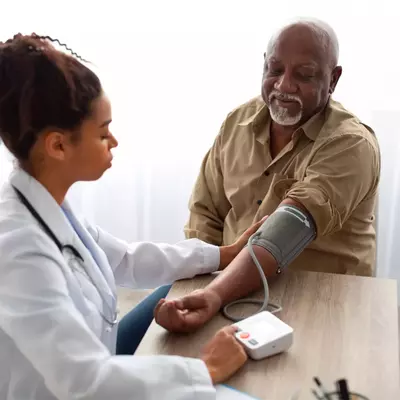- AdventHealth Hendersonville

Choose the health content that’s right for you, and get it delivered right in your inbox.
Now that more people in our communities are getting vaccinated and sports organizations and fitness facilities are opening back up, many people are getting back into their exercise routines. And regardless of what kind of exercise you’re doing, if you or your child have been inactive for an extended period, check with your physician before starting an exercise program — and remember to take it slow to start.
When you’re ready to go, give yourself the best chance of meeting your long-term fitness goals and having your best performance on the field by avoiding injuries. Freidrich Mangulabnan, Clinical Operations Manager at AdventHealth Sports Med and Rehab Apopka, has tips for getting back to exercise routines safely.
Your Risk of Injury Is Greater After a Break
When someone takes time off from their usual sports practices or exercise routine, then there’s a higher chance of getting injured when getting back into it.
“Our soft tissues get tight, making them more prone to tears and micro-injuries when we exercise,” explains Mangulabnan. “There are also sensors in your joints, especially in the foot and muscles, that are impacted by lack of exercise, making you more prone to things like curling your toes, leading to injury.”
With school and youth sports being put on hold during the pandemic, kids and younger adults are encouraged to ease back into their activity, just as adults are.
“While being off from sports, we should keep our muscles flexible and conditioned,” Mangulabnan says. “We should stretch regularly and do light cardio, such as a brisk jog, run or cycling.”
When easing back into activities, he says, “We should gradually increase our level of exercise to make sure our muscles and joints don't get injured. Instead of playing basketball for two hours that first time you play again, gradually practice one to two weeks for a shorter duration and with less intensity.”
For adults, the same is true, but “since our soft tissues (ligaments, muscles and tendons) are not as flexible as younger folks,” Mangulabnan says, “It’s important to include stretching before lifting weights or cardio exercises.” Adults should also reduce resistance when weightlifting and gradually increase it based on comfort level.
Warning Signs to Watch For
Wondering how out of shape you became during quarantine? When you start exercising again, resting heart rate is a good measure to see how you’re doing. This is your heart rate when resting (average 60 to 80 beats per minute). “If your heart rate is higher than the average, it means that your cardiovascular system is not functioning efficiently,” Mangulabnan explains.
“For stretch and endurance, we can measure it based on how much effort it takes to perform certain tasks. For example, if you used to be able to bicep curl 25 lbs. 20 times with moderate difficulty, and now can only do 10 times with a lot of effort, this means that your muscles are deconditioned,” he adds.
So, how can you know when your body is ready for a break? Muscle and joint soreness are a normal reaction of the body after good exercise and should only last 24 to 48 hours. If the soreness is beyond that, then it’s definitely a good indicator to scale back.
Common Sports Injuries to Avoid
As you’re easing back into your old routine, or starting up new routines, be aware of these common sports injuries and seek medical advice if you notice symptoms.
Rotator Cuff Tears or Impingements
These injuries are caused by straining a cold muscle in a sudden overhead motion, such as a tennis serve.
Achilles’ Tendon Ruptures and Tears
This kind of injury is often seen in middle-aged athletes who haven’t stretched. These injuries can happen in any sport that involves running, especially with sudden acceleration, as in tennis and basketball.
Sprains or Strains of the Medial Collateral Ligament
This ligament straps the inside of the knee joint. Often triggered by a lack of strength or flexibility, this injury can occur when you’re pivoting in basketball or rotating suddenly, as a base runner in softball might.
Recovery from a sprain or strain is often summarized using the acronym PRICE, which stands for:
- Protect the area to prevent further injury using tape, splints or braces
- Rest from activities that cause pain
- Ice the affected area intermittently for the first few days
- Compress the area, starting with the area farthest from the heart
- Elevate the ankle above the heart to limit swelling
Talk to a Pro
If you or your child are interested in learning more about proper exercise regimens, our medical fitness program is a great resource for athletes at all levels. Please visit AdventHealth Sports Medicine and Rehab to schedule an appointment with one of our trained professionals.



